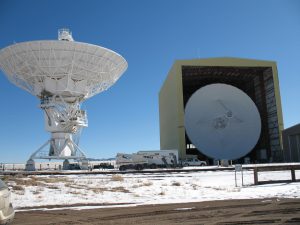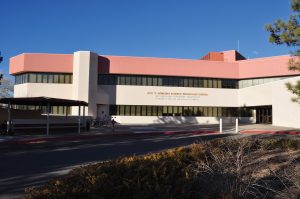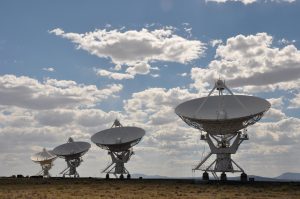A rare look at an antenna of the Very Large Array under construction in the 1970s. The entire 25-meter dish is on the ground behind the pedestal in the Antenna Assembly Building in central New Mexico.


VLA Dish Dipped in the Barn
A rare view of a dipped 25-meter dish antenna of the Very Large Array undergoing maintenance inside the Antenna Assembly Building, also called the Barn. The VLA has 28 of these giant antennas, but only needs 27 for the array. Having a spare means maintenance can happen year-round without a loss of astronomy time.

Array Operations Center
The Array Operations Center sits on the campus of the New Mexico Institute of Technology. Here, staff support the science and technology for the Very Large Array (VLA) and the Very Long Baseline Array (VLBA).

Trucking a Giant Feed Horn
The L-band feed horn is one of the largest feed horns used on our radio telescopes. The size of a feed horn is related to the size of the wavelength that it funnels onto its receiver. L-band wavelengths are 20 centimeters long, so the narrow end of this horn is 20 cm wide where it turns the wavelength into a voltage. If the open end were less than 20 cm across, the waves would simply see it as a mirror, and bounce away. The wider the mouth of the horn is, the more waves can enter the receiver without being lost.

Cloudy Day at the VLA
Clouds cast shadows over the Very Large Array in central New Mexico.

Looking Down the Line at the VLA
The 27 antennas of the Very Large Array in New Mexico sit on piers adjacent to a double-track railway. Several times a year, antennas are pulled from their pads and hauled away down the tracks on the backs of Antenna Transporters, the orange-red vehicle seen in this shot. By spacing the antennas farther apart from each other, we increase their binocular vision which makes them see more detail.





